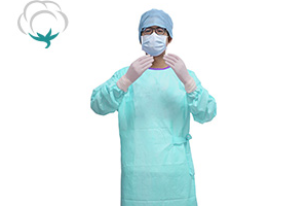15/06/2023
ByWinner Medical
 10516
10516
 Event
Event
The risks of contamination and infection during medical procedures are very real, and to protect both doctors and patients from any potential hazards, the use of surgical gowns is highly recommended. But just what makes a surgical gown so special?
How do surgical gowns work?

A surgical gown is a personal protective garment worn by surgeons during surgeries. Surgical gowns protect the wearer from contact with blood and other body fluids, and they also provide a barrier to prevent the transfer of microorganisms from the surgeon's skin to the patient's wound.
Surgical gowns are typically made from a breathable, disposable fabric such as polyester or polypropylene. They are usually buttoned up the front and have long sleeves with elastic cuffs to keep them in place. Some surgical gowns also have ties at the back to help secure them.
Surgical gowns are intended for single use only and should be removed and disposed of after each surgery.
Do all gowns protect doctors?
No, not all gowns protect doctors. While most gowns are made of materials that offer some degree of protection, there are a number of factors that can affect their effectiveness. For example, the type of fabric used, the fit of the gown, and how often the gown is worn can all impact its ability to protect the wearer.
What are the advantages of a gown?
Wearing a gown during surgery offers a number of advantages for both the patient and the doctor. For the patient, it helps to reduce the risk of infection by creating a barrier between the doctor and the patient's open wound. It also helps to keep the operating room clean by protecting the patient's clothing from blood and other contaminants.
For the doctor, wearing a gown helps to keep them clean and reduces the risk of contamination. It also provides an additional layer of protection against sharp instruments and other potential hazards in the operating room.
What is the best type of surgical gown?
According to Winner Medical, a few critical requirements must be met to create disposable gowns as quickly, safely, and efficiently as possible.
1. A sterile workshop
2. A professional research lab
3. The safe source of material
4. Efficient manufacturing process. Reducing waste and enhancing safety can be achieved by streamlining the process in order to lessen the time it takes to produce a disposable gown.
Conclusion
Keeping medical staff safe is of utmost importance in any healthcare setting. We hope that this information has been helpful in understanding the protective measures required for proper safety protocols when working with hazardous materials, and we encourage all medical personnel to use all necessary precautions when dealing with potentially dangerous substances.